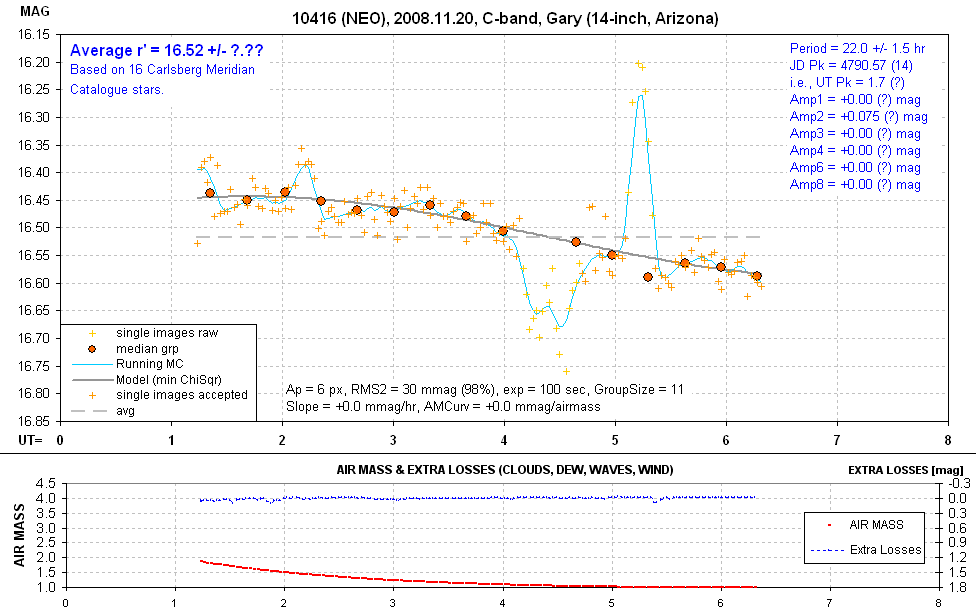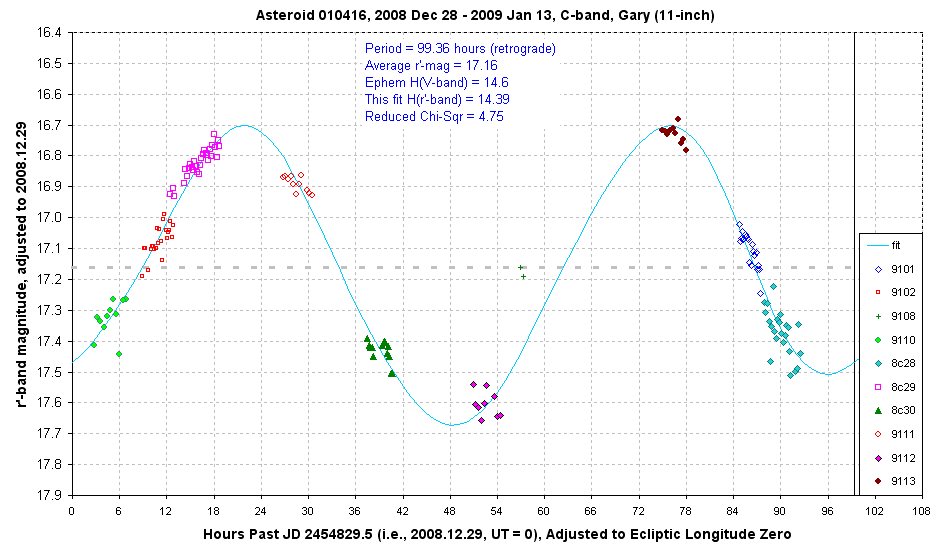
This is the only period that achieves internal consistency for the group of observations during the 16-day interval Dec 28 - Jan 13 assuming retrograde rotation (which affords a slightly better fit than prograde, shown in the next figure). The data have been folded according to P = 99.36 hrs. All mag's adjusted to 2008.12.29. All times have been shifted to equivalent view toward ecliptic longitude zero. The "model fit" is a 4-term sinusoid (with periods = P, P/2, P/3 & P/4 and adjustable phases). The average magnitude is r' = 17.16, and since H(V-band) = 14.6 the measured averaage r'-band magnitude corresponds to H(r'-band) = 14.39.
The above "folded" RLC is only valid if the RLC shape is the same throughout the 17-day interval on which observations were made and the assumed dependence of brightness on phase angle (used by the JPL asteroid ephemeris generator, Horizons - web interface: http://ssd.jpl.nasa.gov/horizons.cgi#top). RLC shape can be affected by the viewing geometry (i.e., orientation of rotation axis with respect to the viewing direction) as well as the sun-asteroid-Earth angle. During the above interval the viewing geometry didn't change much (i.e., ecliptic longitude ranges from +37.5 to +38.6), and the sun-asteroid-Earth angle was also restricted to a small rage (i.e., from +27.7 to +32.7 degrees). It is therefore probably reasonable to assume that the RLC shape remained constant during the 17-day interval.
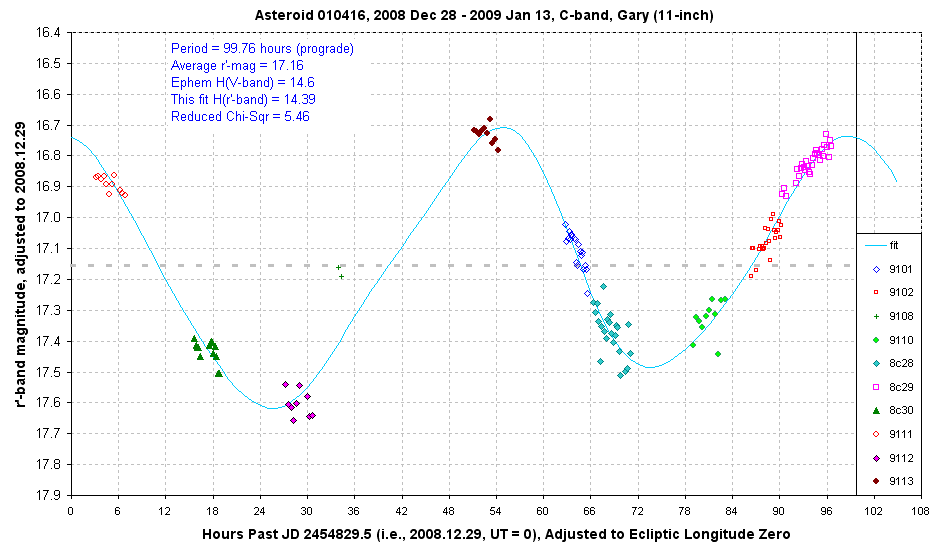
Prograde version, with higher reduced chi-square.
As this graph shows the prograde solution is almost as good as the retrograde one. The reduced chi-squared is 5.46 versus 4.75 for retrograde.
Individual Observing Session RLCs
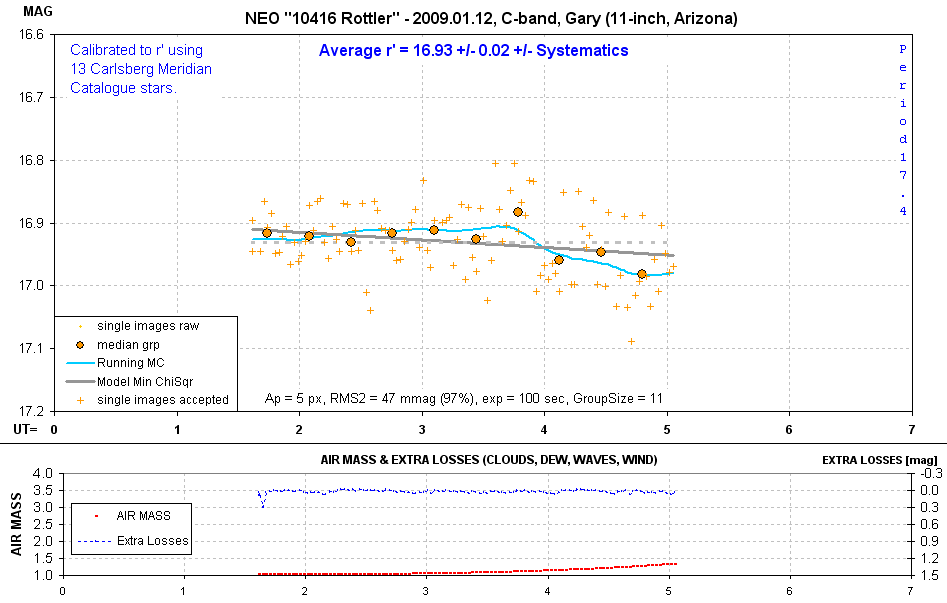
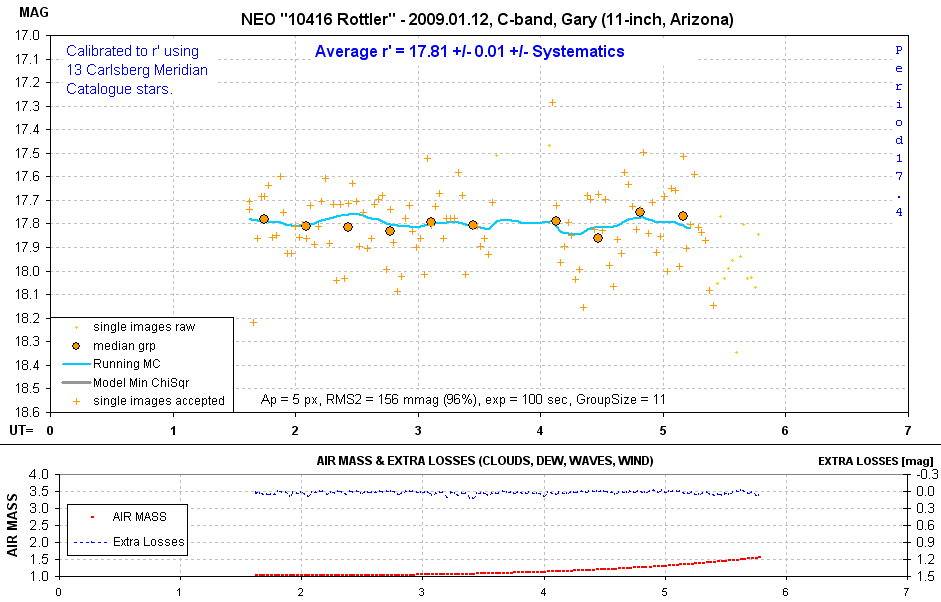
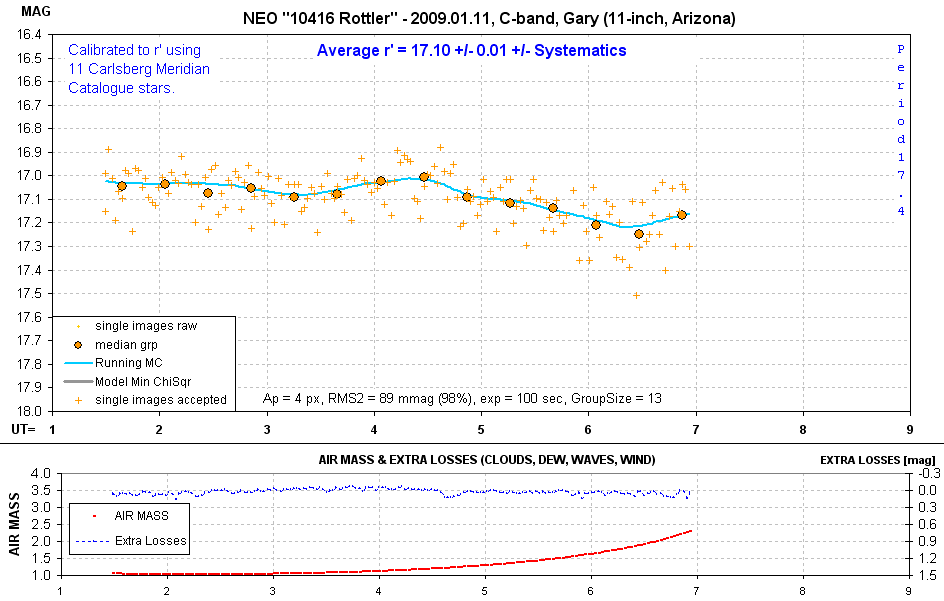
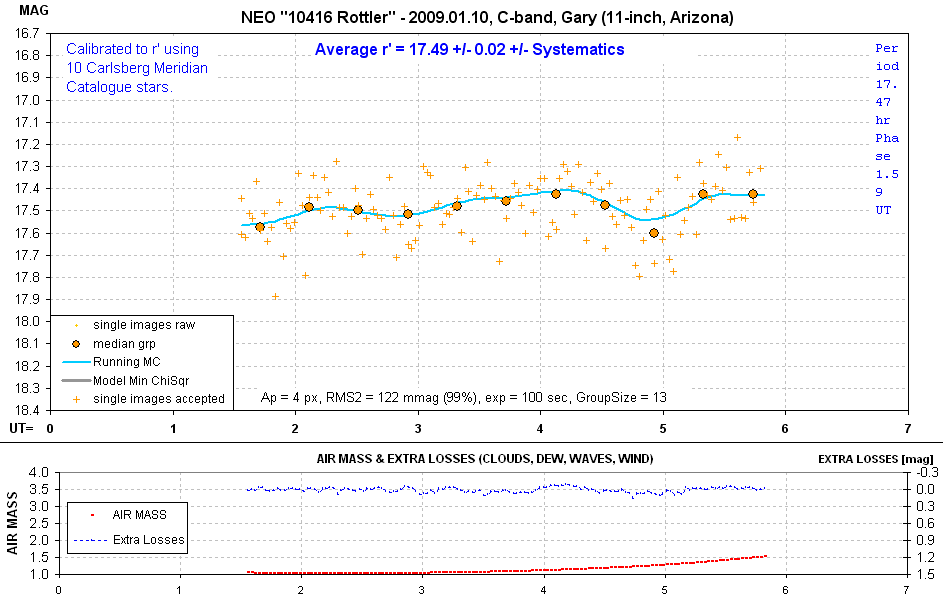
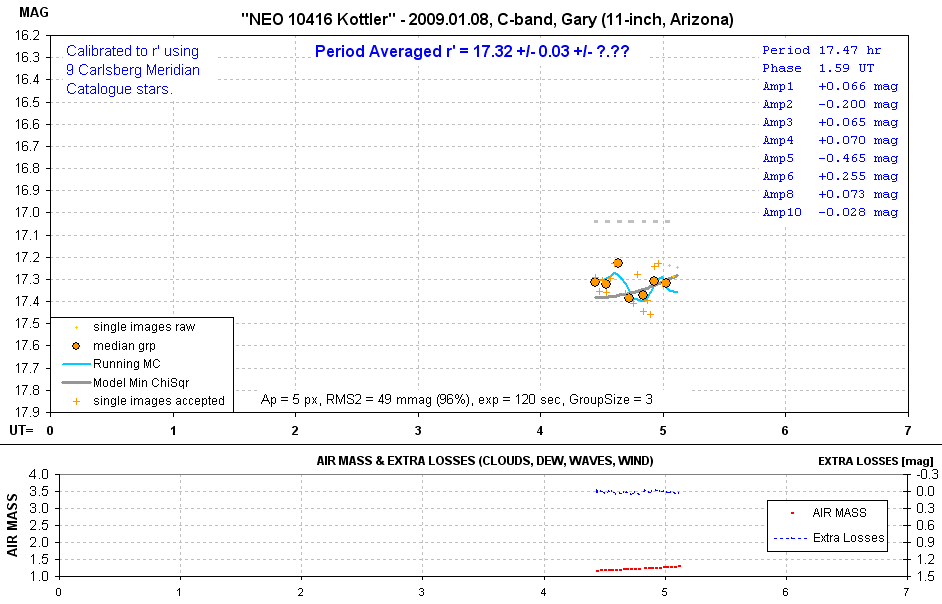
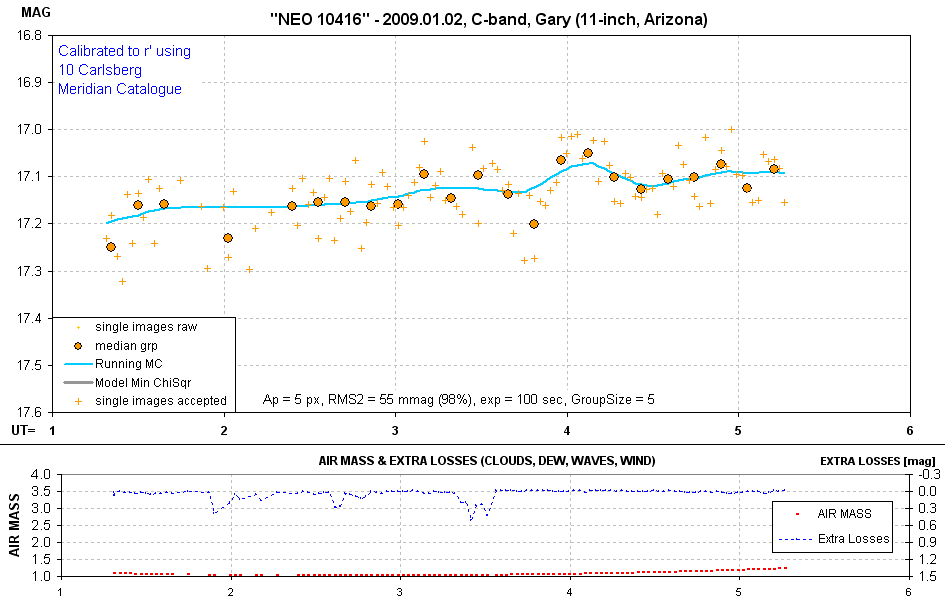
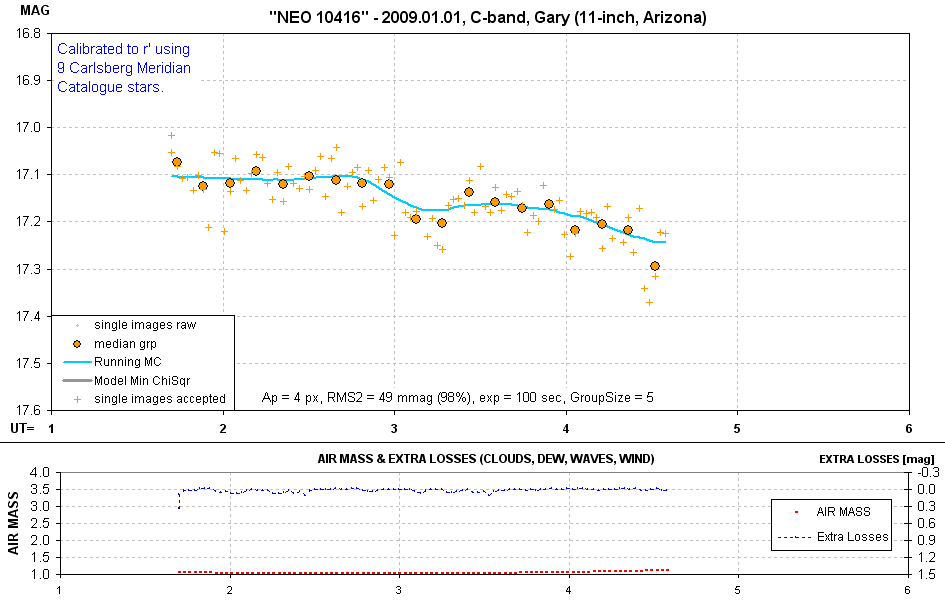
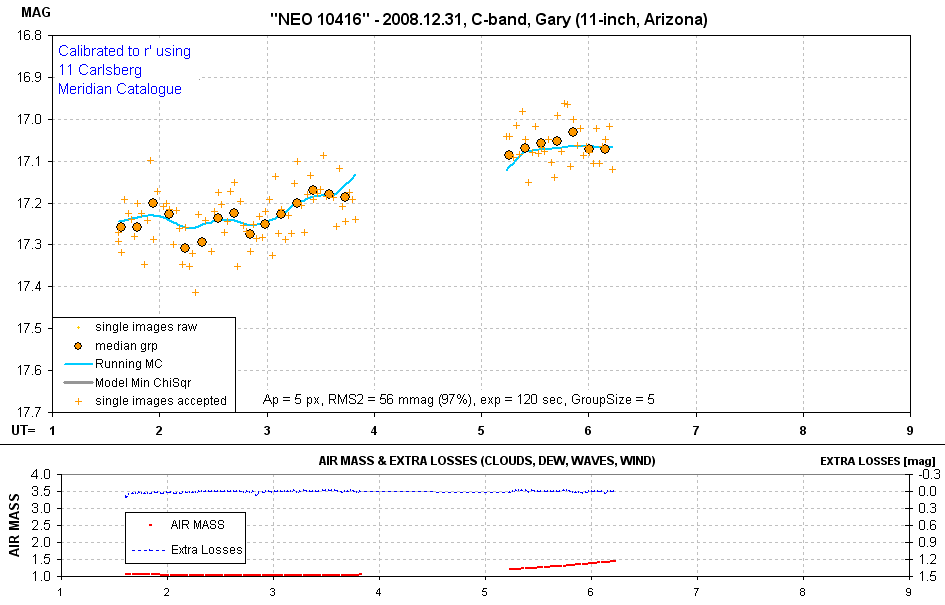
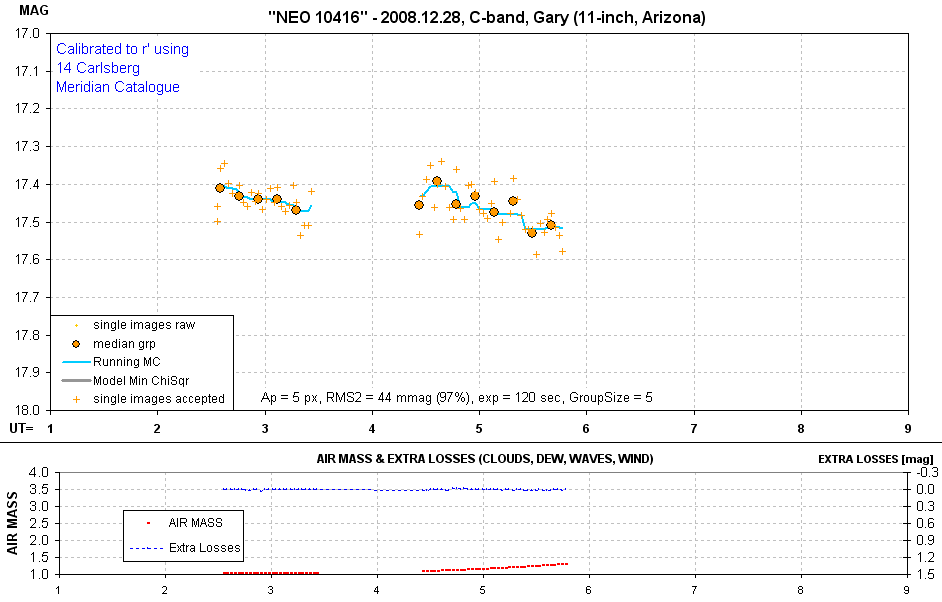
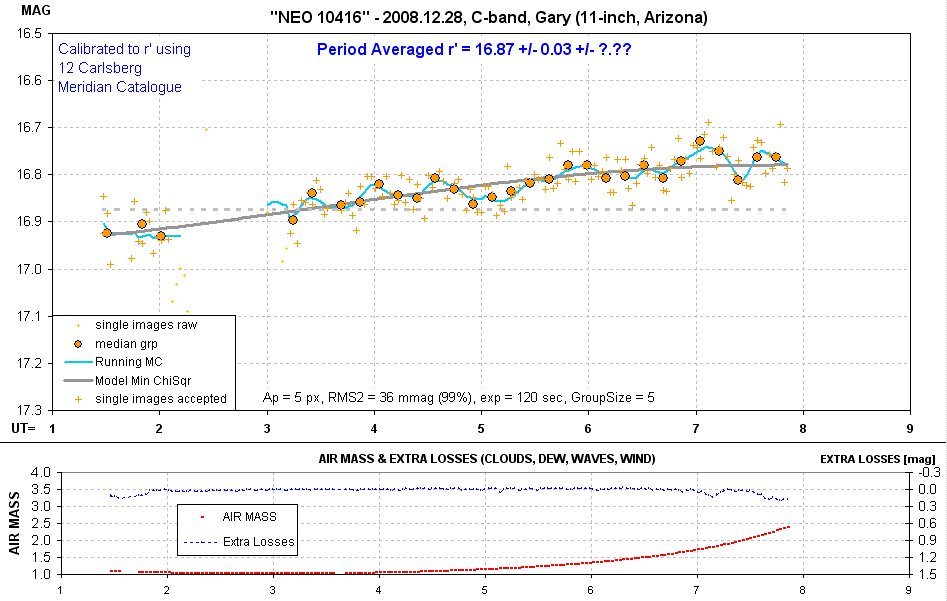
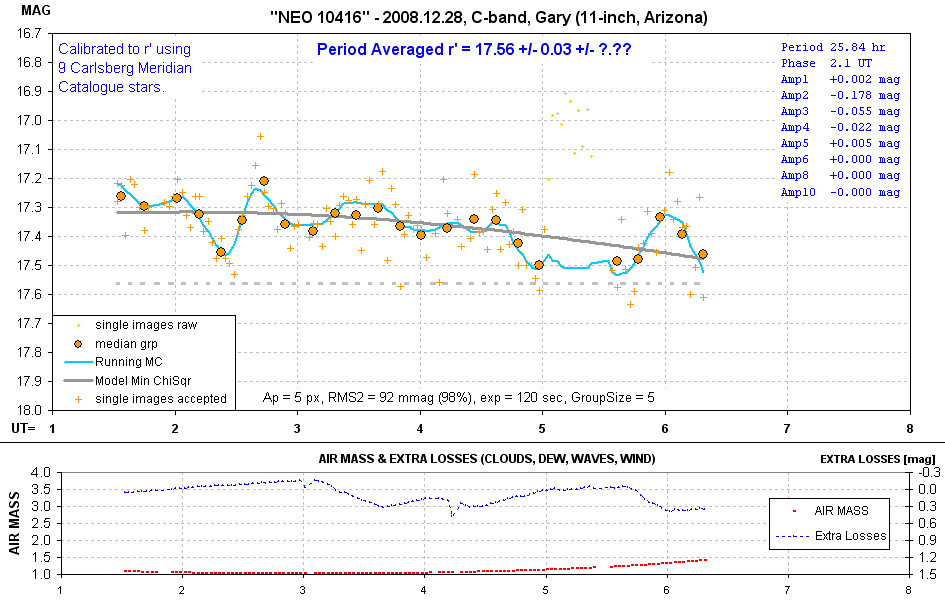
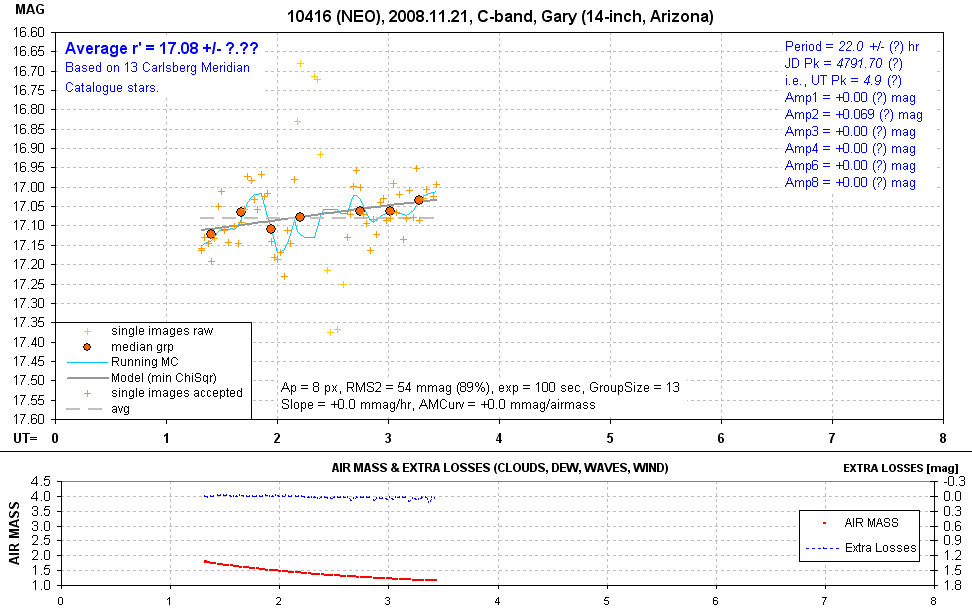
Wind cut short this observing session.
